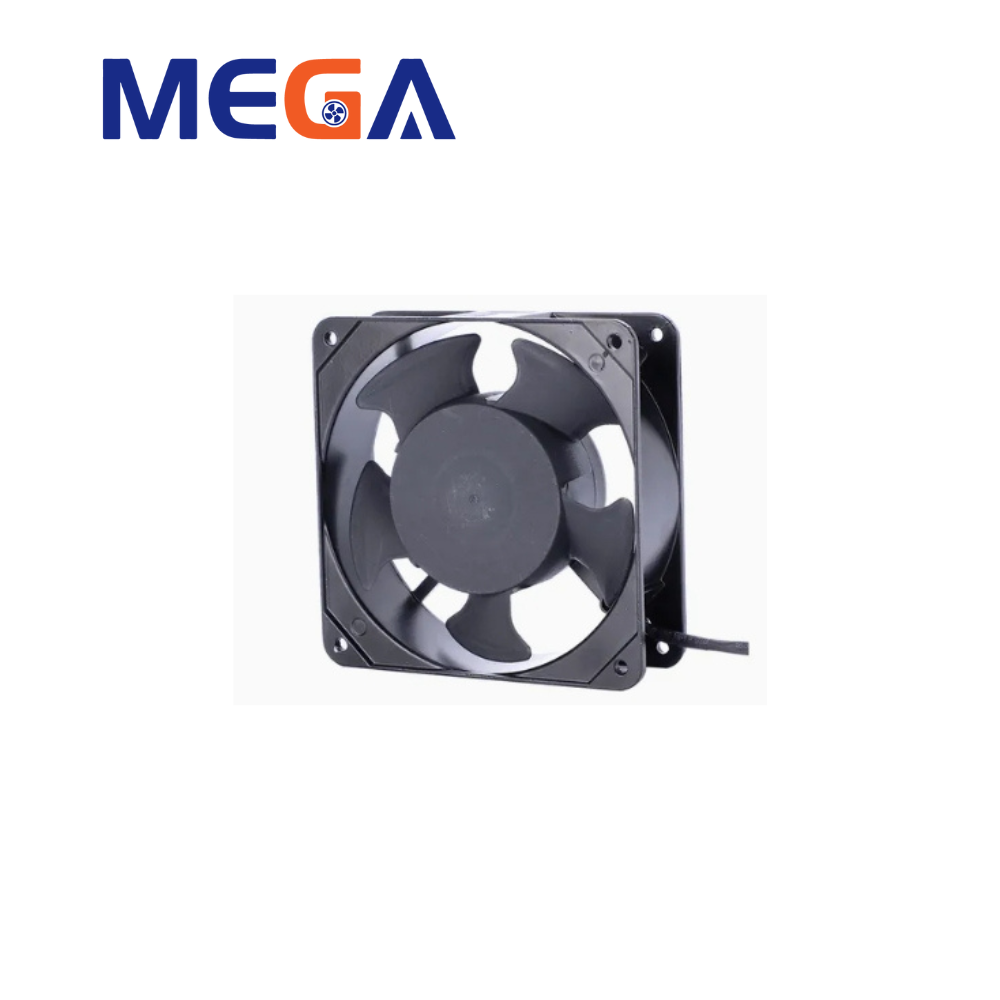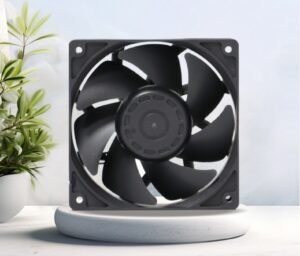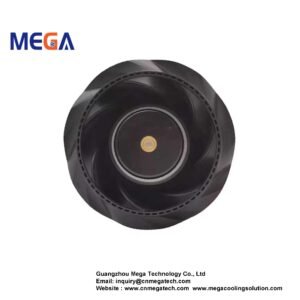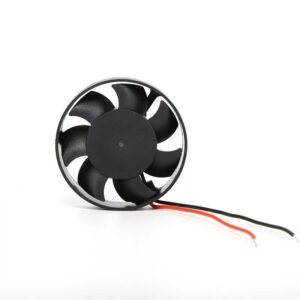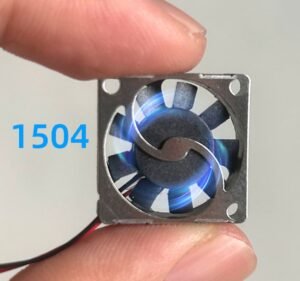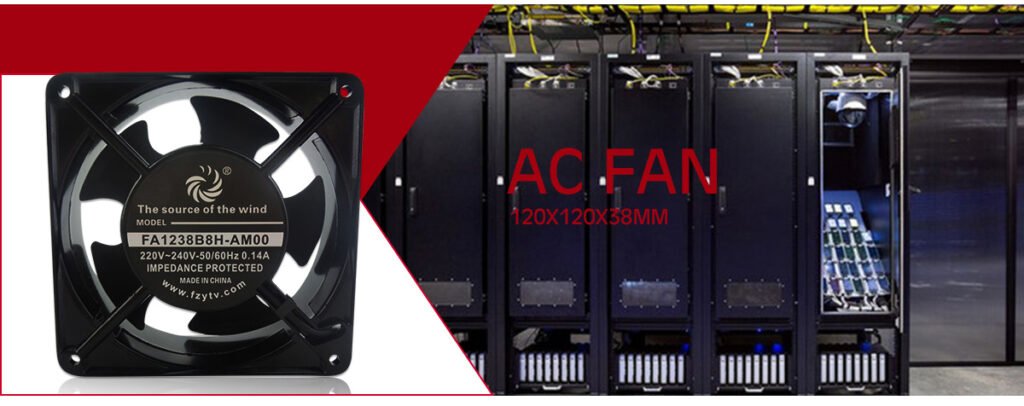Introduction Heat dissipation fans play a crucial role in active cooling, ensuring that equipment operates within optimal temperature ranges. However, understanding the performance metrics of these fans can be challenging for many customers. This guide will help demystify the key indicators that determine fan performance, enabling you to make informed choices for your cooling solutions.
The Importance of Speed in Heat Dissipation Fans Speed, measured in RPM (revolutions per minute), is a fundamental performance metric for heat dissipation fans. The speed of a fan is influenced by various factors such as the number of blades, the number of coil turns in the motor, and the operating voltage. However, it is essential to note that a higher speed does not necessarily equate to better quality. Instead, the speed should be considered in conjunction with other metrics to determine the overall effectiveness of the fan.
Assessing Airflow for Optimal Cooling Airflow is a critical metric for assessing the cooling capacity of a fan. It measures the total volume of air a fan moves in or out per minute, expressed in cubic feet per minute (CFM). Higher airflow generally indicates better cooling performance, but the effectiveness also depends on how the airflow is directed and managed within the equipment.
The Role of Air Pressure in Fan Efficiency Air pressure is inversely related to airflow but is equally important for driving the airflow through the system. Effective cooling requires a balance between airflow and air pressure; otherwise, high-speed fans with high airflow may fail to deliver adequate cooling to all areas. This balance ensures that the cooling air reaches the necessary components without obstruction.
Noise Considerations in Heat Dissipation Fans Noise is an important factor for many applications, especially in environments where quiet operation is crucial. Fan noise, measured in decibels (dB), is generated by factors such as vibration, air turbulence, and interactions between fan components. Generally, higher speeds and greater airflow are associated with increased noise levels. Therefore, it is important to consider the noise profile of a fan in addition to its cooling performance.
Evaluating Fan Lifespan The lifespan of a fan is influenced by its usage environment and operating conditions. High temperatures can accelerate wear and tear, while dust accumulation can impede performance. Operating at high pressure also shortens the lifespan of a fan. Selecting a fan with a suitable lifespan for your application ensures reliability and long-term performance.
Direction of Airflow: Axial vs. Centrifugal Fans The direction of airflow significantly impacts the effectiveness of heat dissipation.
A. Axial Fans Axial fans are commonly used due to their cost-effective and versatile performance. They typically blow air downward, but recent designs have introduced upward-flow configurations.
B. Centrifugal Fans Centrifugal fans, on the other hand, rotate their blades in a vertical plane with the air intake on the side. This design ensures even airflow distribution across the heat sink and offers better control over air pressure and volume. However, they are more expensive and noisier compared to axial fans.
C. Other Enhanced Duct Designs Innovative duct designs address airflow blind spots by altering the exhaust direction. Traditional downward airflow can create rebounding air pressure, reducing efficiency. Sideways air delivery eliminates these issues and enhances heat exchange.
Understanding Bearing Types Bearings play a crucial role in the performance and lifespan of fans.
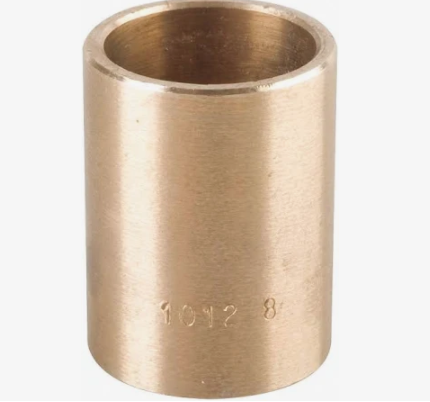
A. Sleeve Bearings Sleeve bearings are low-cost but have a short lifespan and lower performance. They may require frequent maintenance or replacement.
B. Improved Sleeve Bearings Improved sleeve bearings, such as Hypro, offer moderate performance and noise levels with an extended lifespan at a reasonable price.
C. Ball Bearings Ball bearings provide balanced performance, a longer lifespan, and moderate noise levels. They are more expensive than sleeve bearings but offer better overall performance.
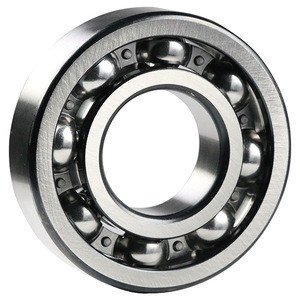
D. Specialized Bearings Specialized bearings, such as hydraulic or precision ceramic bearings, deliver high performance, low noise, and a long lifespan. These bearings are ideal for high-end applications but come with a higher price tag.
Customization and Cost-Effectiveness with Mega Tech Fans Unlike standard models from manufacturers like Sanyo Denki, which often come with high customization costs, Mega Tech fans offer customizable solutions tailored to specific customer requirements and different application scenarios at competitive prices. This flexibility makes Mega Tech fans an attractive option for various cooling needs.
Conclusion Understanding the performance metrics of heat dissipation fans is essential for selecting the right fan for your application. By considering factors such as speed, airflow, air pressure, noise, lifespan, and bearing types, you can make informed decisions to ensure optimal cooling performance. Mega Tech’s customizable and cost-effective fans provide reliable solutions for a wide range of cooling needs, helping you achieve the best results for your projects.
Questions? Email us at inquiry@cnmegatech.com or speak to one of our experts for further information on the ideal solution for your application 008613570567086.
Articles you may also like:
- Cooling Fan Applications in Energy Storage Systems
- How to Replace a Sanyo Denki Fan with a Mega Fan
- The Crucial Role of Cooling Fans in Inverters
- DC Fan in the Application of Stage Lighting
- Efficient Cooling: The Ultimate Guide to Mega Tech Cooling Fans
- Why Mega Fan is the Best Alternative to EBM Papst Fan
- Essential Role of Cooling Fans in the Medical Industry
- High-Performance Fans and Their Impact on the Reliability of Energy Storage PCS

